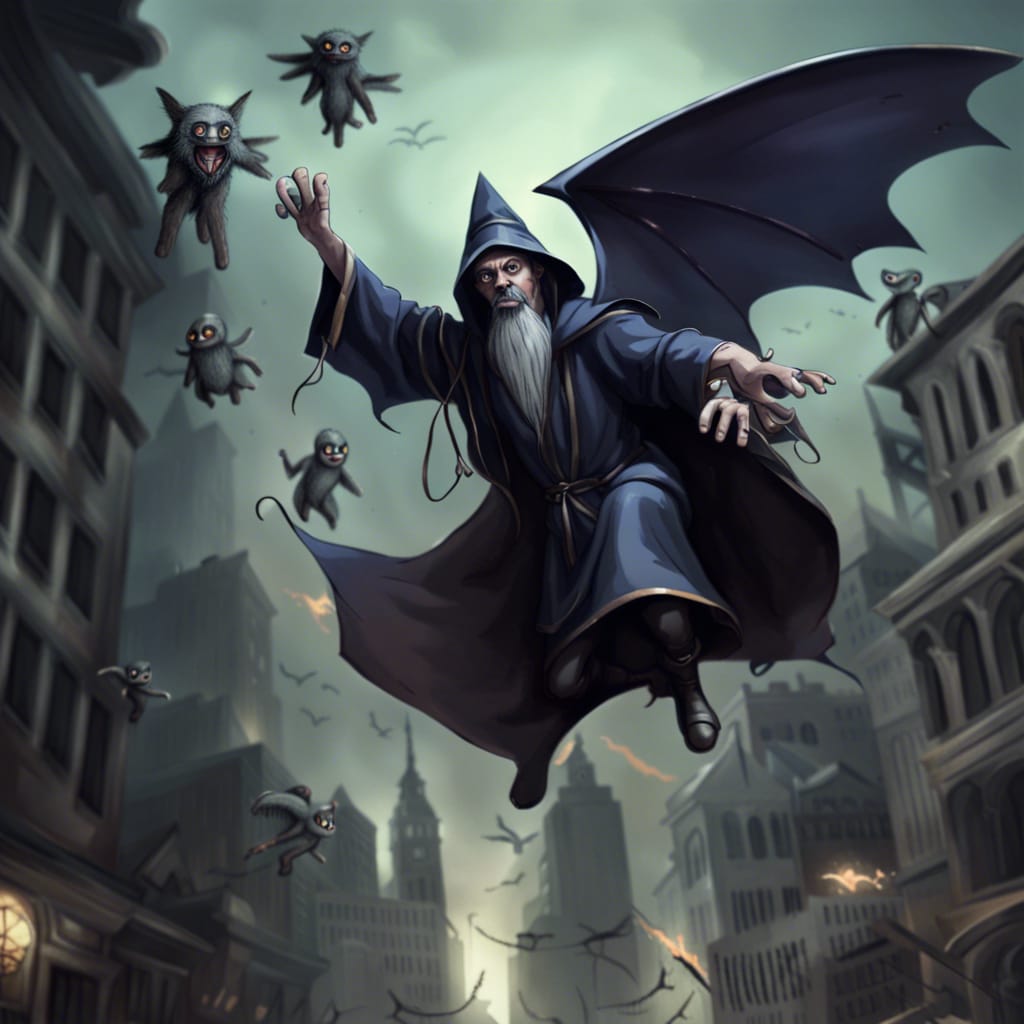
In the world of psychology and literature, certain metaphors and symbols hold profound and insightful meanings. One such fascinating allegory lies within the concept of “flying monkeys” and its close association with narcissism. The term “flying monkeys” has its origins in L. Frank Baum’s “The Wizard of Oz” has since transcended the literary realm to become a powerful analogy for manipulative behavior.
Narcissism falls along the axis of trying to defend against shame and humiliation.
Aaron Beck
🐒Introduction
In this blog post, we will explore the enthralling connection between flying monkeys and narcissism, delving into the characteristics of narcissistic individuals, understanding the role of flying monkeys, and learning how to navigate these treacherous dynamics.
Nature of Narcissism
Before we embark on our exploration of “flying monkeys,” we must first grasp the essence of narcissism. Narcissism is a personality trait characterized by an excessive sense of self-importance, a deep need for admiration, and a lack of empathy for others. Narcissists exhibit a grandiose self-image, often exploiting others for their gain and seeking constant validation and attention.
An Enigma
When Dorothy and her friends embark on their journey to meet the powerful Wizard of Oz, they encounter numerous obstacles along the Yellow Brick Road. Among the most enigmatic and terrifying adversaries are the flying monkeys. Initially, under the control of the Wicked Witch of the West, they epitomize a group of enforcers ready to do her bidding without question. Their ability to fly adds to the sense of looming danger, evoking anxiety and fear.
Narcissism and Flying Monkeys
To understand the connection between flying monkeys and narcissism, we must delve into the psychology behind this personality disorder. Narcissism refers to an excessive focus on oneself, coupled with a lack of empathy for others.
In The Wizard of Oz, the Wicked Witch of the West exemplifies a narcissistic figure, seeking to dominate and control those around her. The flying monkeys, in turn, become her loyal minions, displaying unquestioning obedience, mirroring the sycophantic behavior commonly associated with narcissistic followers.
A Manipulative Nature
Within the context of The Wizard of Oz’s narrative, the flying monkeys serve as tools of manipulation, perpetrating fear and intimidation on behalf of their narcissistic leader.
This aspect of the story reflects the real-world dynamics often observed in toxic relationships or within manipulative social structures, where people are coerced into carrying out the will of a dominant individual without any consideration for the consequences or ethical implications.
Parallels with Real-Life
Though the flying monkeys are fantastical creatures, their symbolic representation finds resonance in real-life situations. Many individuals have encountered narcissists who surround themselves with devoted followers, eager to fulfill their every whim. These followers, often referred to as “flying monkeys,” act as a protective barrier against criticism or perceived threats to the narcissist’s image.
This dynamic can be observed in workplaces, family settings, and even social circles, leaving victims feeling isolated and helpless.
🪢Breaking Free
In “The Wizard of Oz,” the protagonists eventually manage to escape the clutches of the flying monkeys, challenging the Wicked Witch’s power and asserting their independence. Likewise, individuals facing narcissistic manipulation in real life can learn valuable lessons from Dorothy and her friends.
Breaking free from the hold of flying monkeys requires recognizing the toxic dynamics, setting boundaries, and seeking support from genuine allies who prioritize empathy and mutual respect.
More Tips
What works for one person may not work for another. However, some general tips you can follow to make yourself as uninteresting as possible to a narcissist.
First, avoid any sort of emotional response when interacting with the egomaniac. This includes both positive and negative emotions. Instead, remain calm and detached at all times.
Second, avoid talking about yourself as much as possible. Narcissist is only interested in people who are attracted to them, and talking about yourself will make you more attractive.
Third, try to avoid doing things that the narcissist would find interesting. For example, if you know that the narcissist enjoys going to art galleries, then avoid going to art galleries yourself.
Fourth, make sure to keep your distance from the narcissist. The more space you can put between yourself and the narcissist, the less likely it is that the narcissist will want to bother you.
Quotes
While flying monkeys are often thought of as a metaphor, they can also be actual people in the narcissist’s life. These are the people who do the bidding of the narcissist. They may not even realize they are being used.
-Dr. Stephanie Sarkis
The narcissist’s goal is to control and intimidate their victim. They want you to feel like you can’t survive without them.
-Psych Central
Narcissistic abuse is a form of emotional abuse that occurs when a person uses tactics such as verbal attacks, humiliation, intimidation, or isolation to control someone else.
–Psychology Today
Conclusion
“The Wizard of Oz” continues to enchant readers of all ages with its timeless symbolism and captivating narrative. The flying monkeys serve as a poignant reminder of the dangers of narcissism and manipulative influences in our lives.
By understanding the deeper meaning behind flying monkeys, we can equip ourselves with the knowledge and courage needed to face such challenges head-on and emerge stronger, just like Dorothy and her companions. Let us strive to cultivate empathy, resilience, and self-awareness as we navigate the Yellow Brick Road of life, steering clear of any flying monkeys that may attempt to cross our path.





